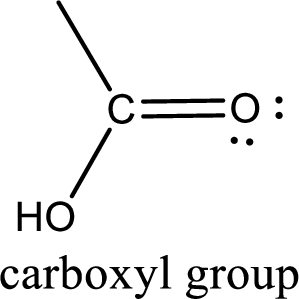
Concept explainers
Interpretation:
Hydroxy acid has to be chosen from the given acids.
Concept Introduction:
Carbonyl groups are the one which contain a double bond between carbon and oxygen atom.

If a hydroxyl group is attached to a carbonyl group means it is known as carboxyl group. This can be represented as shown below,

Apart from carboxyl group, there can be other functional group also that is present in the
Want to see the full answer?
Check out a sample textbook solution
Chapter 16 Solutions
EBK GENERAL, ORGANIC, AND BIOLOGICAL CH
- Which of the following is removed when tea is brewed in hot water? A. Cellulose B. Tannins C. Glucose D. Caffeine E. Sodium bicarbonatearrow_forwardWhich of the following is/are NOT (an) essential fatty acids? A. arachidonic acid B. linoleic acid C. palmitic D. oleic acidarrow_forwardGive pathologic conditions would result to the appearance of the following substance in the urine and the mechanism explaining its presence. A. Fructose or Levulose B. Lactose C. Galactosearrow_forward
- Zinc is a cofactor of which of the following enzymes? A. Xanthine oxidase B. Glutathione proxidase C. Carbonic anhydrase D. Lysyl oxidasearrow_forwardAcid hydrolysis of soap yields _________ a. fatty acids b. glycerol c. salts of fatty acids d. triacylglycerolarrow_forwardSports beverages are a combination of fluid, carbohydrate, and? A. Diuretics B. Electrolytes C. Unsaturated fatty acids D. Soluble fiberarrow_forward
- Essential oils are fat soluble and attracted to lipids and are, therefore, considered: Choose one answer. a. oleophobic b. hydrophilic c. lipophilic d. amphiphilicarrow_forwardα-linolenic acid has a lower melting point than ___________ because, although they have the same number of carbons, the former is an unsaturated fatty acid whereas the the latter is a saturated fatty acid. A. palmitic acid B. stearic acid C. oleic acid D. linoleic acid E. arachidonic acidarrow_forwardThe hydrolysis of proteins yields A. esters B. organic acids C. amino acids D. formic acidsarrow_forward
- A mixture containing glutamic acid, arginine, phenylalanine and valine was subjected to anion exchange chromatography at pH 7.0. Which of the amino acids interacted with the resin (anion exchanger) and last to be eluted with a buffer of decreasing pH? A. Glu B. Val C. Phe D. Argarrow_forwardWhich of the following is/are (a) ketose? A. tagatose B. lyxose C. erythrulose D. allosearrow_forwardWhich of the following is NOT essential fatty acids? A. Omega-3 fatty acid B. Alpha-linoleic acid C. Linoleic acid D. Saturated fatty acidarrow_forward
- Essentials of Pharmacology for Health ProfessionsNursingISBN:9781305441620Author:WOODROWPublisher:Cengage


